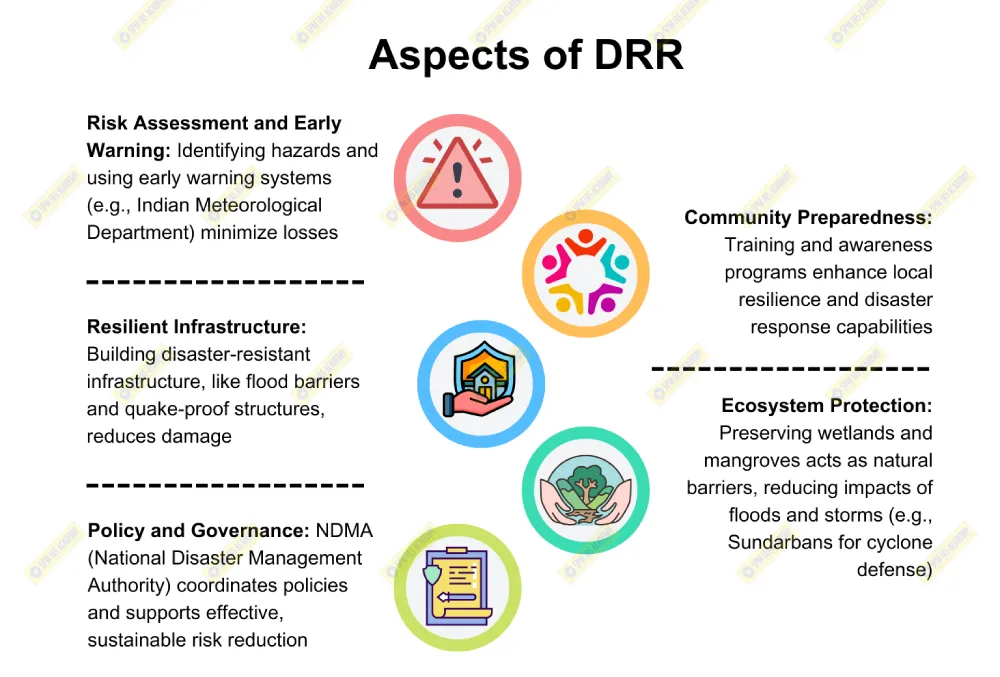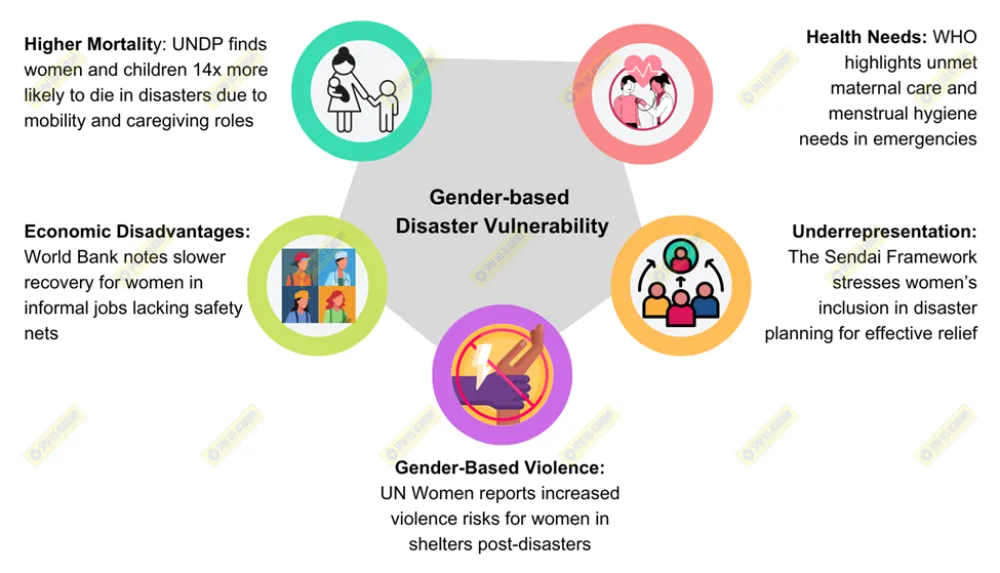Gender-Responsive Disaster Risk Reduction (DRR) is an approach that actively integrates gender perspectives into disaster management processes to ensure equitable outcomes for all groups, particularly focusing on women, men, girls, and boys. Recognizing that different genders face unique vulnerabilities and possess distinct capacities during disasters, gender-responsive DRR aims to address these disparities, leading to more effective and inclusive risk reduction.

Gender-Responsive Disaster Risk Reduction
Gender-Responsive Disaster Risk Reduction (DRR) integrates gender perspectives into disaster management to ensure equitable outcomes for all groups, focusing on the distinct needs and capacities of women, men, girls, and boys. Its components include:
- Addressing Gender Disparities – Recognizes that social roles, economic inequalities, and cultural norms often place women and marginalized groups at greater risk during disasters, impacting their access to resources, information, and mobility.
- Empowering Women in DRR – Involving women in leadership roles and decision-making in disaster planning enhances community resilience, as women bring unique perspectives and solutions based on their lived experiences.
- Alignment with Global Goals – Supports the Sendai Framework for Disaster Risk Reduction, which emphasizes gender inclusion in all disaster risk strategies to create more inclusive and resilient communities.
- Long-Term Recovery and Resilience – Gender-responsive DRR not only improves immediate disaster response but also strengthens long-term recovery, ensuring that rebuilding efforts address the specific needs of all genders for sustainable resilience.

Barriers to Gender Mainstreaming in DRR
- Cultural and Social Norms:
Restrictive gender roles and biases limit women’s participation in decision-making processes. - Lack of Representation:
Women and marginalized genders are often underrepresented in DRR planning and leadership roles. - Insufficient Gender-Disaggregated Data:
Lack of specific data hinders the identification of diverse needs and vulnerabilities. - Resource Constraints:
Limited access to financial, technical, and institutional resources for implementing gender-sensitive programs. - Inadequate Awareness and Training:
Limited understanding of the importance of gender equity among policymakers and DRR practitioners.
Examples of Overcoming Barriers
- Community Involvement in Nepal:
Post the 2015 earthquake, women-led self-help groups played a pivotal role in rebuilding efforts, proving their capacity in decision-making and resource management. - Gender-Responsive Policies in the Philippines:
The government enacted the Magna Carta of Women, mandating women’s representation in disaster councils, ensuring gender-sensitive disaster response. - Inclusive Data Collection in India:
During the Odisha cyclone, gender-disaggregated data was used to design shelter management, prioritizing women’s safety and needs. - Capacity Building in Bangladesh:
Training programs for women in flood-prone areas empowered them to lead evacuation and relief efforts, enhancing community resilience.
Gender-responsive DRR is vital for building equitable and resilient communities. Addressing barriers through inclusive policies, community participation, and capacity building ensures that all genders contribute to and benefit from disaster risk management, advancing both social equity and sustainable development goals.











